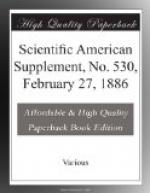This “American” alphabet, as here presented, through the liberality of Dr. A. Graham Bell, has been drawn and engraved from photographs, and represents typical positions of the fingers, hand and fore-arm from a uniform point of view in front of the person spelling, or as seen in a large mirror by the user himself.[10]
[Footnote 10: See an interesting paper on figured manual alphabets by H.H. Hollister, Annals, xv., 88-93.]
This alphabet can be learned in less than an hour, and many have learned it by extraordinary application in ten minutes. It is recommended that the arm be held in an easy position near the body, with the fore-arm as in the plates. Each letter should be mastered before leaving it. Speed will come with use; it should not be attempted nor permitted until the forms of the letters and the appropriate positions of the hand are thoroughly familiar. The forms as given are legible from the distant parts of a public hall. In colloquial use the fingers need not be so closely held nor firmly flexed, as represented, but sprawling should be avoided. It is not necessary to move the arm, but a slight leverage at the elbow is conducive to ease and is permissible, provided the hand delivers the letters steadily within an imaginary immovable ring of, say, ten inches in diameter.
[Illustration: THE ONE-HAND ALPHABET IN GENERAL USE.—FRONT VIEW.]
This adjunct to speech-reading is recommended for its convenience, clearness, rapidity, and ease in colloquial use, as well as for its value as an educational instrument in impressing words, phrases, and sentences in their spelled form upon the mind, in testing the comprehension of children, and in affording by easy steps a substitute for the sign-language.
In the simultaneous instruction of large classes not able to follow speech, finger-spelling “may take the place of signs to a great extent in the definition, explanation, and illustration of single words and phrases, and in questions and answers upon the lessons, and in communications of every kind to which the stock of language already acquired may be adequate."[11]
[Footnote 11: The Use of the Manual Alphabet, by S. Porter: Proceedings of the Eighth Convention of American Instructors, pp. 21-30. Copies of the Proceedings which contain this extremely valuable paper may be obtained of R. Mathison, Superintendent of the Ontario Institution, Belleville, Ontario.]
All who have anything to do with the school instruction of the deaf may well bear in mind the matured opinion and wise counsel of Professor Samuel Porter, of the National College, the Nestor of American instructors. In this connection, Professor Porter says:
In short, let the gestural signs come in only as a last resort, or, so far as possible, merely as supplementary to words, re-enforcing them in some instances, or employed as a test of the pupil’s knowledge of words, but always, so far as possible, falling behind and taking a subordinate place. And let the pupils be required, in what they have to say to their teachers in the schoolroom or elsewhere, to employ the finger-alphabet instead of natural signs to the utmost possible extent, and this by complete sentences and not in a fragmentary way.




